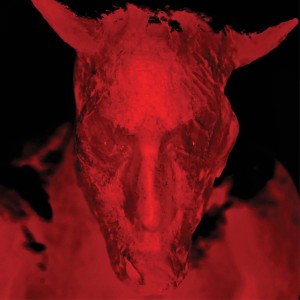 After its appearance as a musical work in live performances in the 2010s (i.e. Dark Mofo festival, Grotowski Institute, etc.), and as an art installation in 2020 at New York’s Fridman Gallery online and in 2022 in Germany and Portugal for in-person audiences, ‘Broken Gargoyles’ was released as an album in August 2022. The album, however, is neither the soundtrack to the installation, nor a recording of the musical performance.
After its appearance as a musical work in live performances in the 2010s (i.e. Dark Mofo festival, Grotowski Institute, etc.), and as an art installation in 2020 at New York’s Fridman Gallery online and in 2022 in Germany and Portugal for in-person audiences, ‘Broken Gargoyles’ was released as an album in August 2022. The album, however, is neither the soundtrack to the installation, nor a recording of the musical performance.
With a booklet containing illustrations of paintings, photographs and poems, Broken Gargoyles (2022) is more than a music release. Diamanda Galás has included in the booklet four illustrations of her own paintings (there were sixteen in her installation), pre-WW1 German poetry, both in the original language and the English translation, and eleven images of wounded First World War soldiers with damaged faces, taken from a 1924 illustrated book compiled and published by the German activist and pacifist Ernst Friedrich.
The reason why Galás merges these textual, visual and audio elements is that they had been used separately for years – in isolation from each other. So, with Broken Gargoyles (2022) she re-connects them. This allows her not only to re-establish the links that existed between them, but also to create new links between the historical material and some contemporary elements (her photographic portraits, taken by Robert Knoke and Austin Young, and her music). In the 2020 installation, Galás had also included film.
But the linking of all these artefacts is more of a protest against the forces that un-linked, or separated, them, and the forces that kept them apart throughout the years. In this sense, Galás engages with the separation of the arts, or the tendency to place strict barriers between different art forms. This is a widespread phenomenon in our time. We have, for example, music magazines, art magazines, poetry magazine, and so on, in which music, art, poetry, or any other art form, is discussed separately, in isolation from the other arts.
Separating the arts, and cutting off the links that exist between them, can be problematic. The arts are different forms of expression, so if we work using a single art form, we cannot provide the whole picture of a given subject. In other words, we do not tell the whole story to our audiences.
